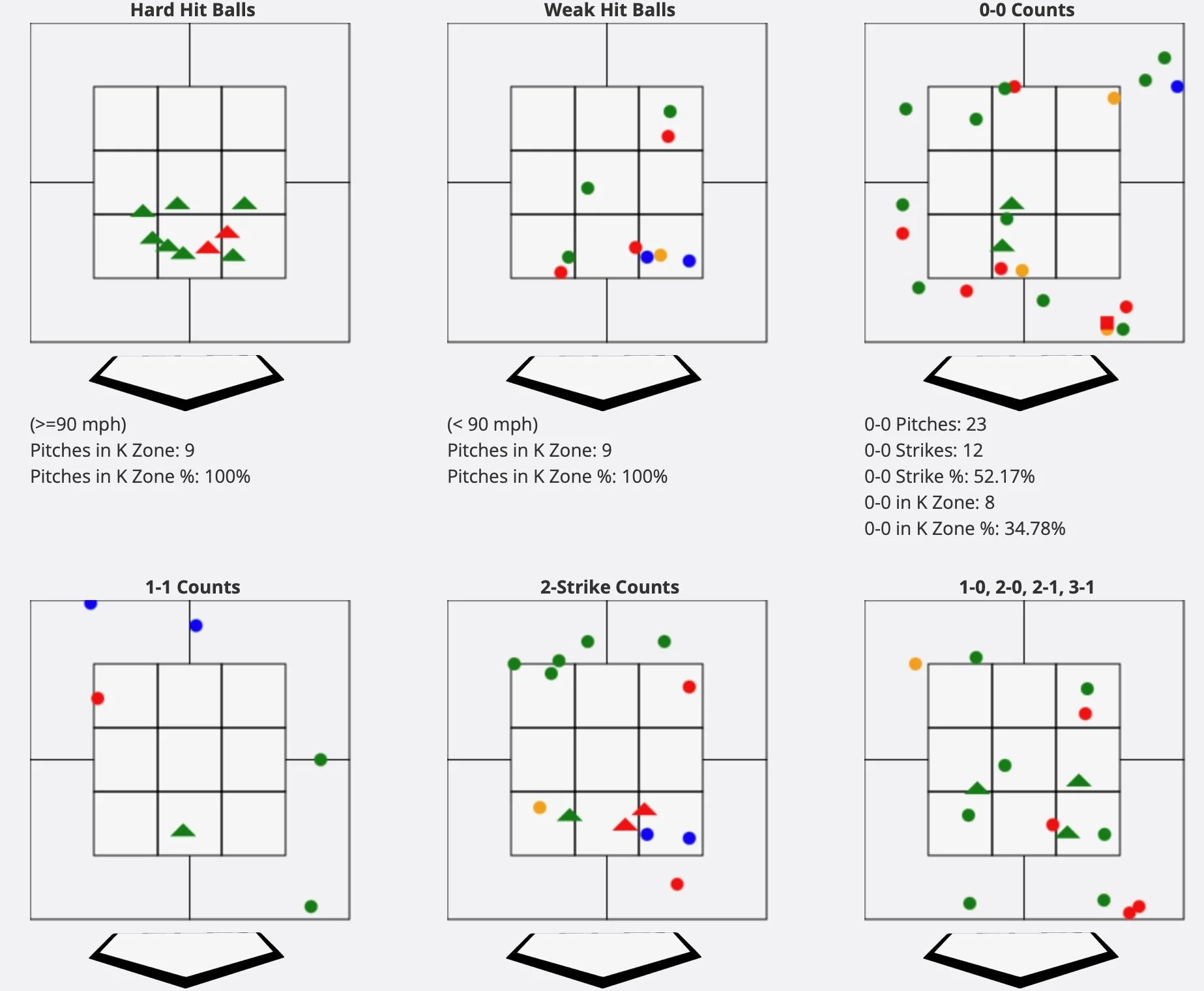How do you develop an approach at the plate when the pitcher is below average?
By Sam Morris, Hitting Approach Intern, and OF at Millersville University
Hitters—if a pitcher throws hard, has life on his fastball, and is able to tunnel his breaking ball off of it, should you sit on a pitch or a zone? On the flip side, if a pitcher’s arsenal is poor—the fastball velocity is below average and the breaking ball is easy to pick up out of the hand, has bad shape, doesn’t tunnel, should you sit on a pitch or a zone? How aggressive is too aggressive? When should you be more selective?
Since the point of this article is to simplify the game for hitters, I like to start with the basics. Partly because it ends up sounding like a much easier process that way… A pitcher's arsenal refers to the range of pitches they possess and their ability to execute them effectively. This typically includes pitches such as fastballs, change-ups, sliders, curveballs, and sinkers, among others. The effectiveness of a pitcher's arsenal lies in their ability to disguise and locate these pitches, varying speed, movement, and location to keep the hitter off-balance. It is important to think about what the pitcher is trying to do in order to get you out. This way you can work on approaches at the plate to counteract their efforts (like sitting on zones).
When facing a pitcher with a limited or ineffective repertoire of pitches, I am saying that hitters can afford to simplify their approach. Instead of trying to anticipate the exact type and location of each pitch, they can focus on sitting in particular zones within the strike zone. This approach enables them to wait for a pitch in their desired zone, increasing their chances of making solid contact AND their chances of not chasing out of the zone. There are multiple reasons to back this up:
1. Predictability: A pitcher lacking a diverse arsenal often becomes predictable in their pitch selection. They may rely heavily on one or two pitches, throwing them in predictable counts or situations. Consequently, good hitters can narrow down the possible pitch types and locations, giving them an advantage when it comes to timing and preparation.
2. Lack of Off-Speed Variance: Off-speed pitches, such as change-ups and curveballs, are designed to disrupt a hitter's timing and create deception. A pitcher with a limited arsenal may lack the ability to consistently throw off-speed pitches with different speeds and movements. This deficiency allows hitters to focus primarily on the pitcher's fastball, making it easier to time their swings and make solid contact.
3. Difficulty in Changing Eye Levels: An effective pitcher knows how to change the vertical location of their pitches, forcing hitters to adjust their eye level and potentially chase pitches out of the strike zone. However, a pitcher with a weak arsenal often struggles to effectively change eye levels, making it easier for hitters to stay disciplined and lay off pitches that aren't in their desired hitting zone.
4. Simplified Plate Approach: Facing a pitcher with limited offerings, hitters can simplify their plate approach. They can focus on looking for pitches in certain zones, rather than having to account for a wide variety of pitch types and locations. This allows them to narrow their focus and improve their decision-making process, leading to better pitch selection and increased chances of success.
Don’t overthink at-bats against pitchers with bottom of the barrel pitches and sequencing. It’s supposed to be easier but sometimes as you progress through the game and play at a higher level it can be difficult to remember how to succeed at a lower level. While a pitcher with a formidable arsenal can be a daunting challenge for any hitter, a pitcher with a weak arsenal inadvertently simplifies the game. Hitters must use the advantages that predictability, a lack of off-speed variance, difficulty in changing eye levels, and a simplified plate approach all provide. The ability to sit in zones instead of on pitches provides an edge to the hitter, increasing their likelihood of getting on base and achieving success at the plate.



